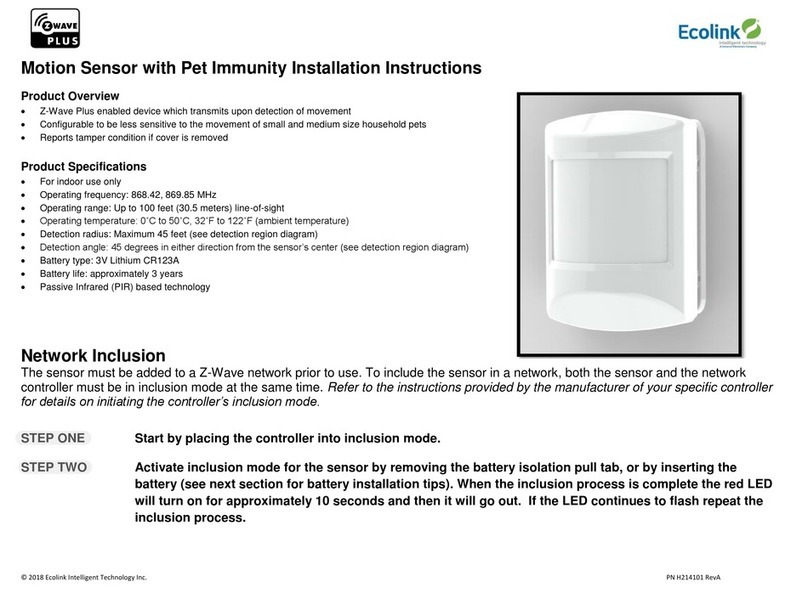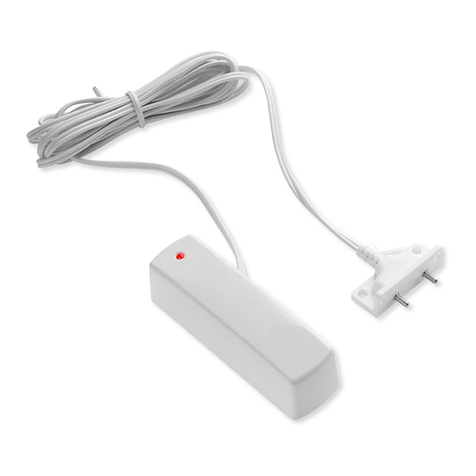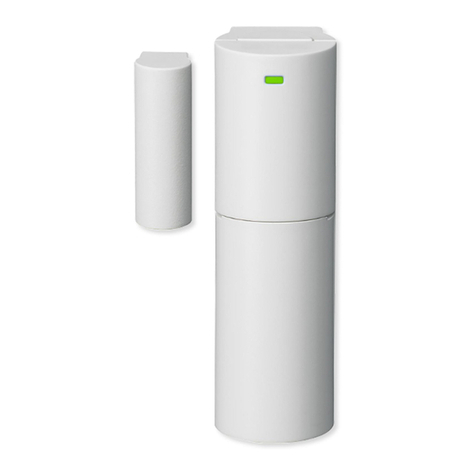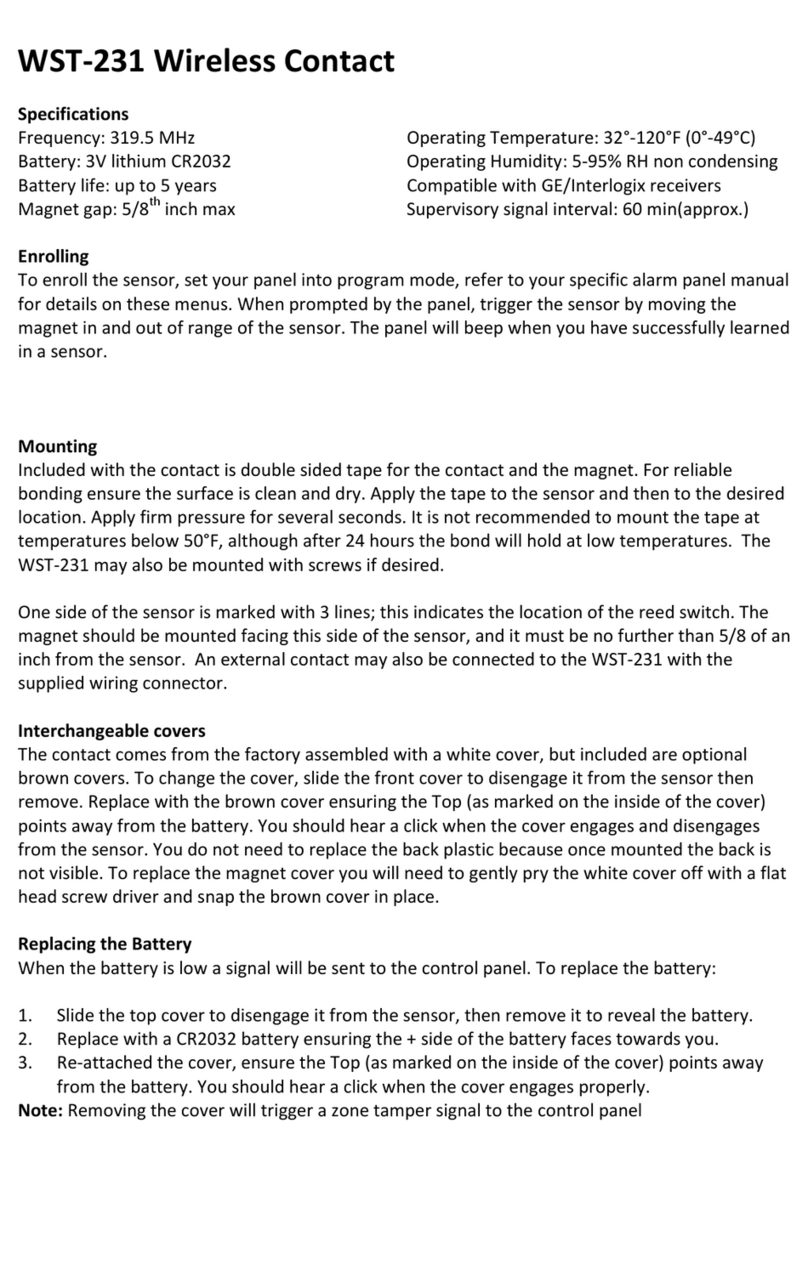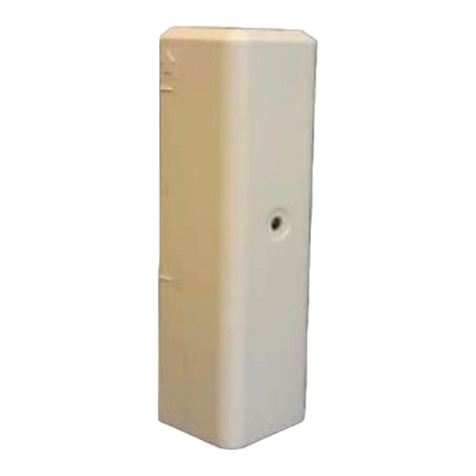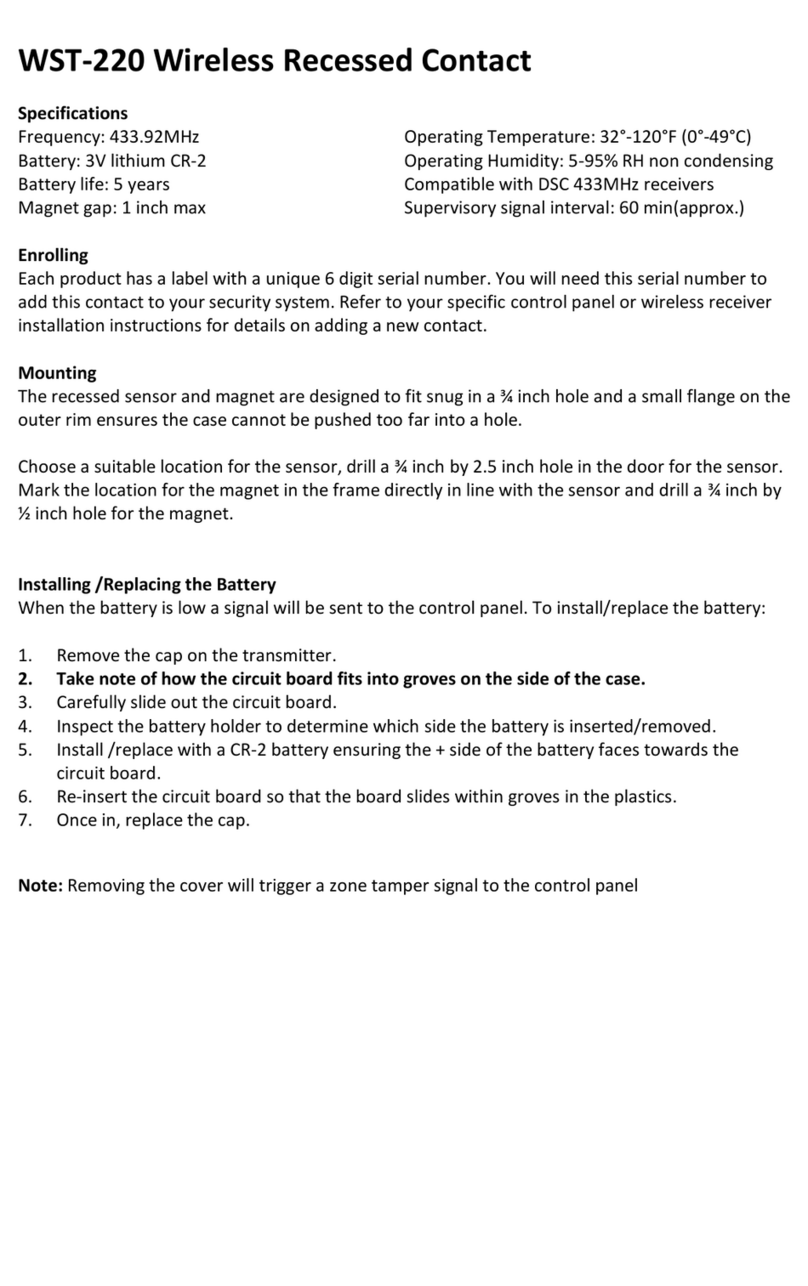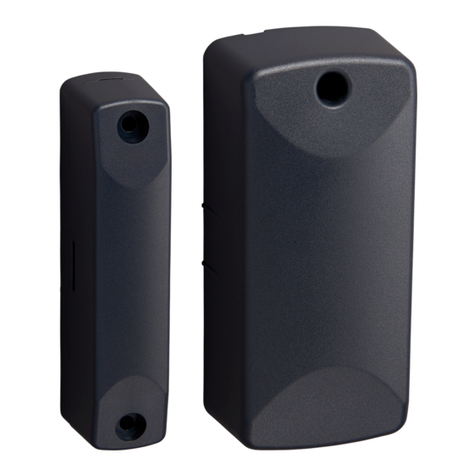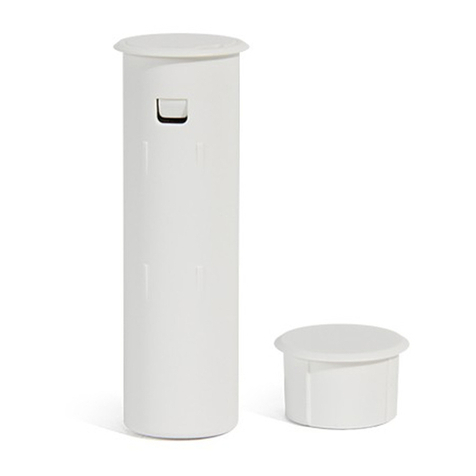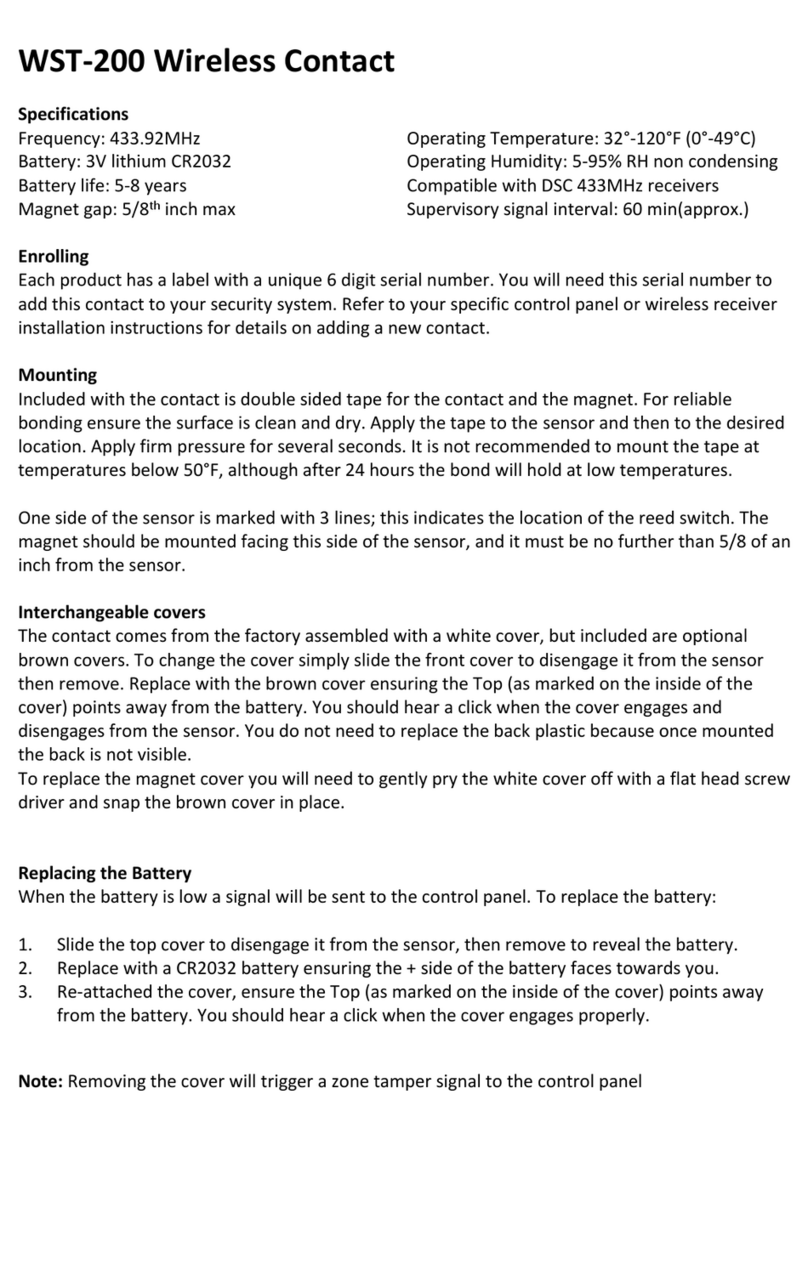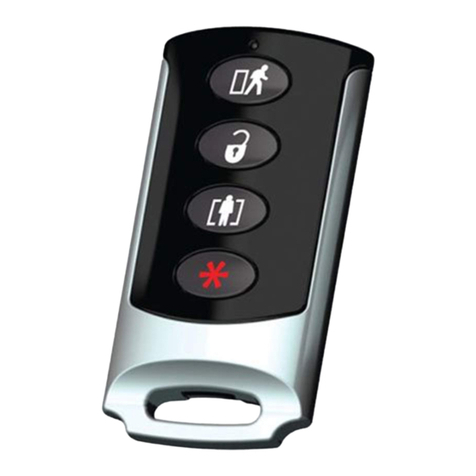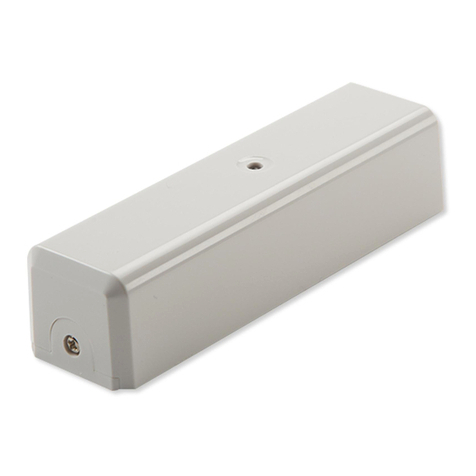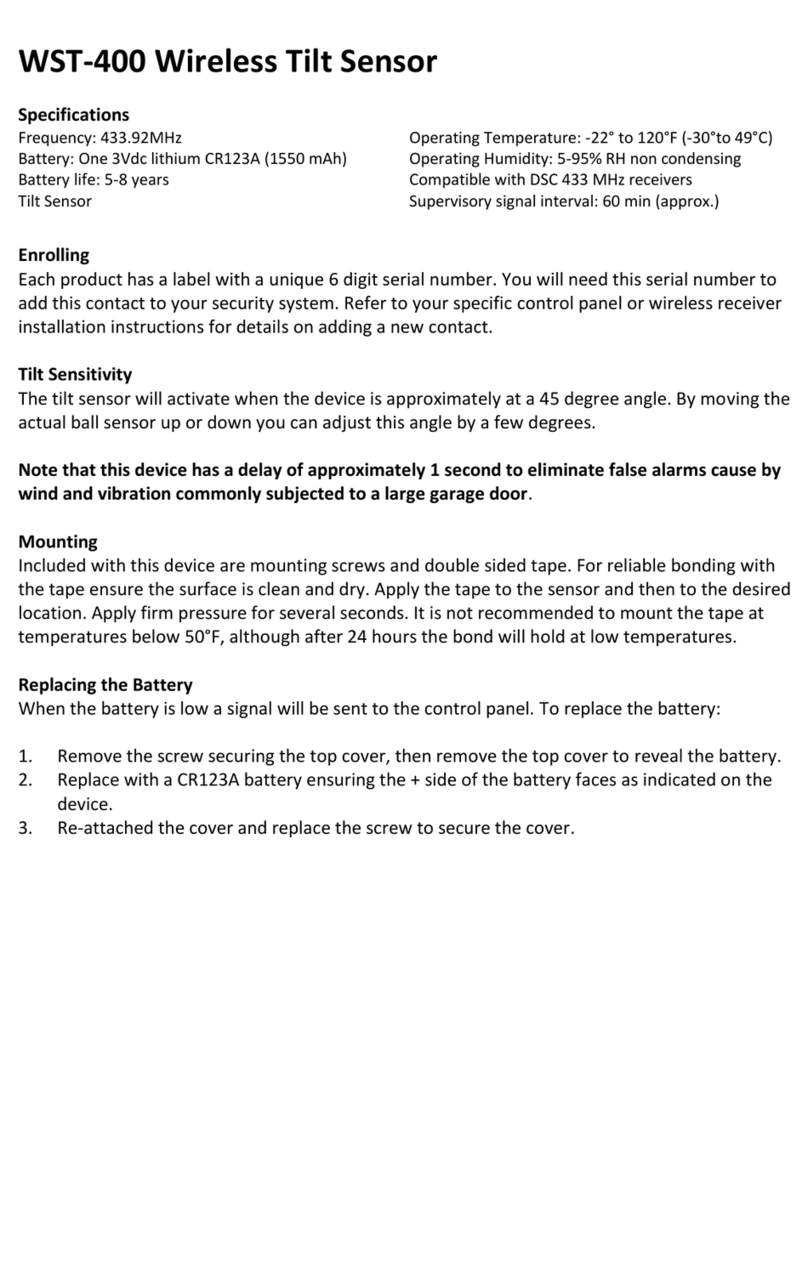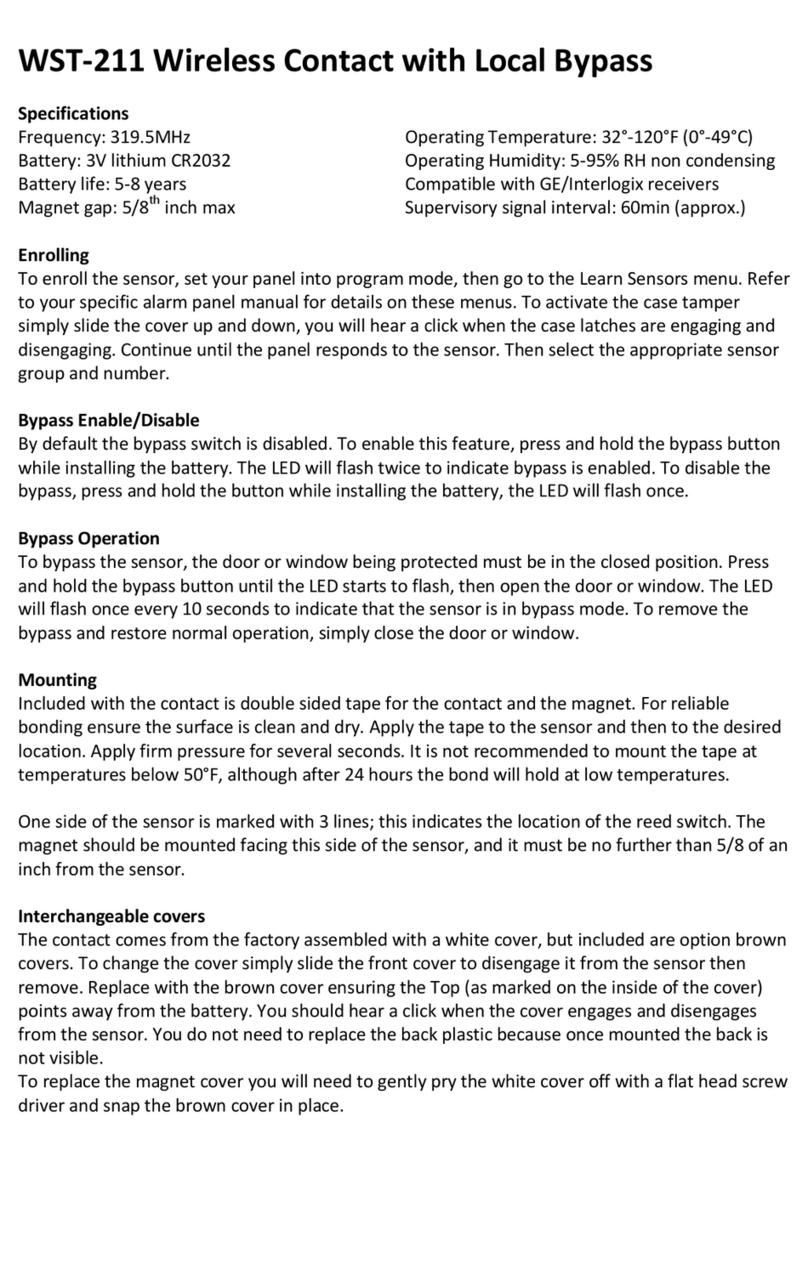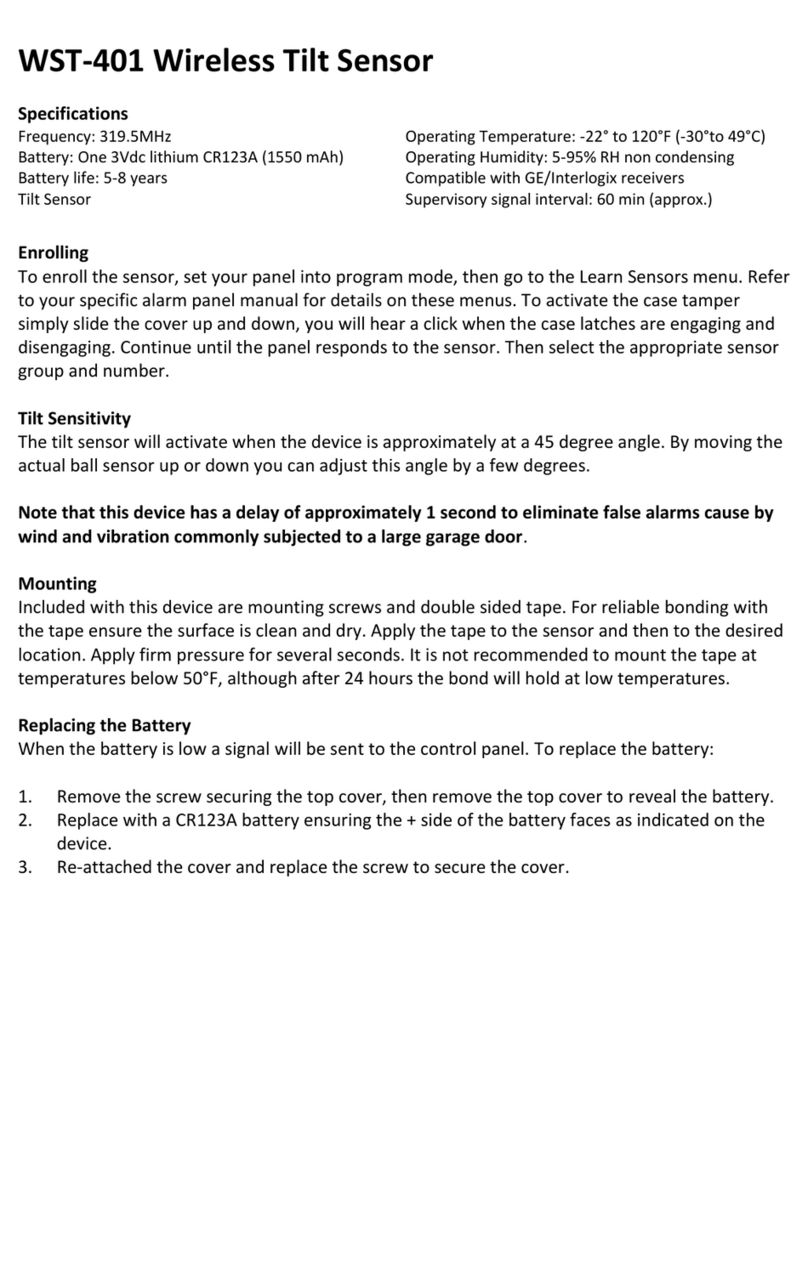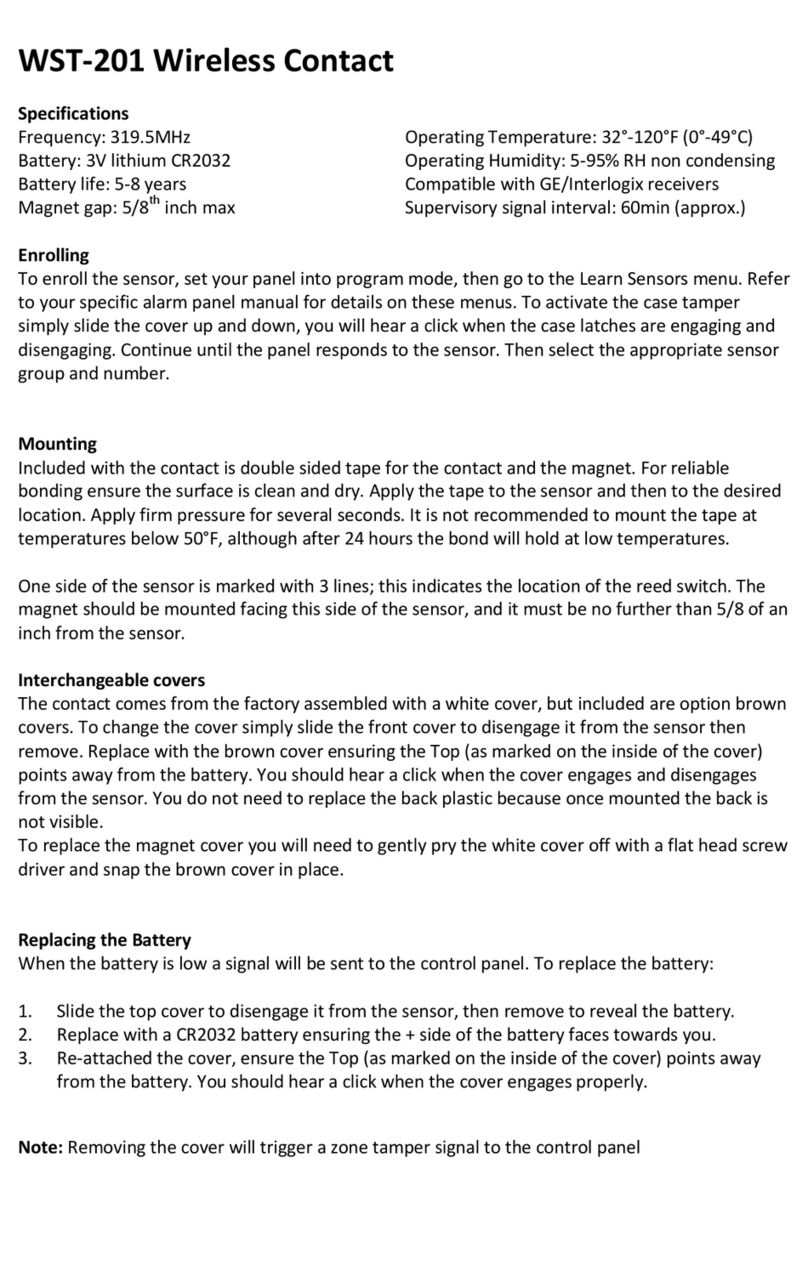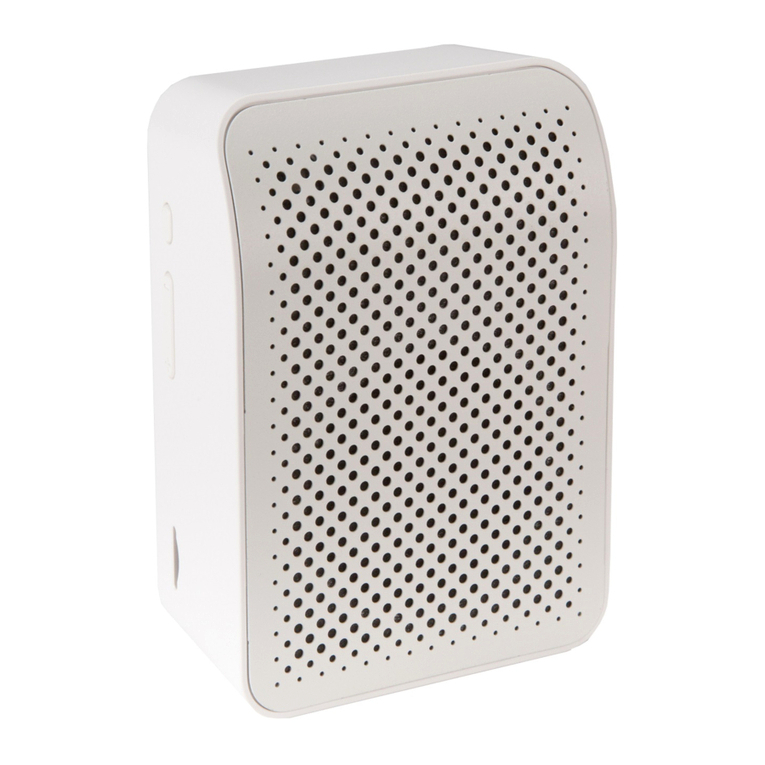
Page 2 of 2
1. When triggered (angle of tilt sensor deviates from resting position) the sensor will send a Z-Wave
message of type “basic set 0xFF”. When the tilt sensor is restored to a closed position, a Z-Wave
message of type “basic set 0x00” is transmitted.
2. The sensor nit is programmed with two Association gro ps. Gro p 1 can store the node ID of p to
five controllers. Controllers will all receive a “basic set 0xFF” when triggered and “basic set
0x00” once the sensor is restored to normal position. Gro p 2 stores the node IDs for p to five
devices that can be activated with a basic set of 0xFF when the sensor is triggered. S ch devices
incl de chimes, sirens, or light switches. Each device in gro p 2 listens for Z-Wave messages of type
“basic set 0xFF”.
3. Excl sion is the process of removing a sensor from a Z-Wave network. To excl de the tilt sensor from
a Z-Wave network, place the controller into “excl sion mode” (see controller man fact rer’s
instr ctions to p t the controller into excl sion mode). Once the controller is in excl sion mode,
remove the battery from the tilt sensor. Wait ten seconds and then replace the battery. When the
battery is replaced, check to see if excl sion mode was s ccessf l by observing the LED. If excl sion
was s ccessf l, the LED will blink contin o sly.
4. The sensor enters sleep mode when not in se. However, the sensor m st be “awake” to receive
messages from the controller. To activate “stay-awake mode”, remove the front cover. This will wake
p the sensor. Leave the cover off to enable the controller to q ery the sensor for device specific
information and capabilities.
This device complies with Part 15 of the FCC r les. Operation is s bject to the following two conditions:
1. This device may not ca se harmf l interference.
2. This device m st accept any interference received, incl ding interference that may ca se ndesired
operation.
Changes or modifications not expressly approved by Ecolink Intelligent Technology, Inc. can void the
sers’ a thority to operate the eq ipment.
This device complies with Ind stry Canada license-exempt RSS standards. Operation is s bject
to the following two conditions: (1) this device may not ca se interference, and (2) this device
m st accept any interference, incl ding interference that may ca se ndesired operation of the
device.
C’et appareil est conforme la norme d'Ind strie Canada exempts de licence RSS. Son fonctionnement est
so mis a x de x conditions s ivantes: (1) c’et appareil ne pe t pas provoq er d'interférences, et (2) c’et
appareil doit accepter to te interférence, y compris les interférences q i pe vent ca ser n ma vais
fonctionnement de la dispositif.
Federal Comm nications Commission Statement

